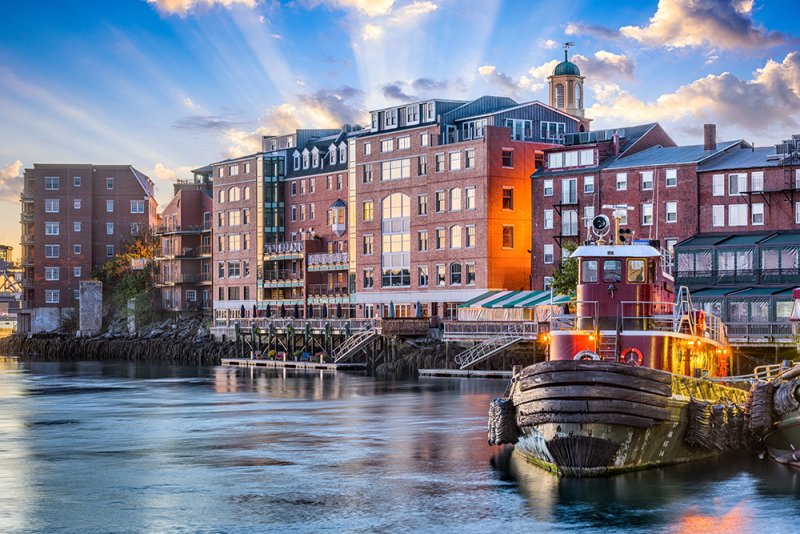 Photo by Sean Pavone/123RF.com.
Photo by Sean Pavone/123RF.com.
Over the past 50 years, Portsmouth has morphed from a salty, rough-and-tumble military town to an economic and cultural center that many consider NH’s biggest boom town. These days, the city on the Piscataqua River is a regional employment hub with a growing commercial base, a historic and walkable downtown that draws tourists from around the world, a reputation as an arts magnet and such culinary renown that it boasts more restaurant seats (27,000) than residents (21,000).
But change has come at a cost. Along with the growth of downtown boutique shops, new arts venues, improvements to infrastructure and an influx of tourists has come housing shortages and rising rent prices that are out of reach for some of the very people who contributed to the revitalization. In that regard, says Valerie Rochon, chief collaborator at the Chamber Collaborative of Greater Portsmouth, “We’re a victim of our own success.”
From Boozy to Bustling
That success was hard won, as Portsmouth has faced multiple economic challenges starting from the days when it was a boozy seaside town catering to sailors and airmen from the Pease Air Force Base and the Portsmouth Naval Shipyard.
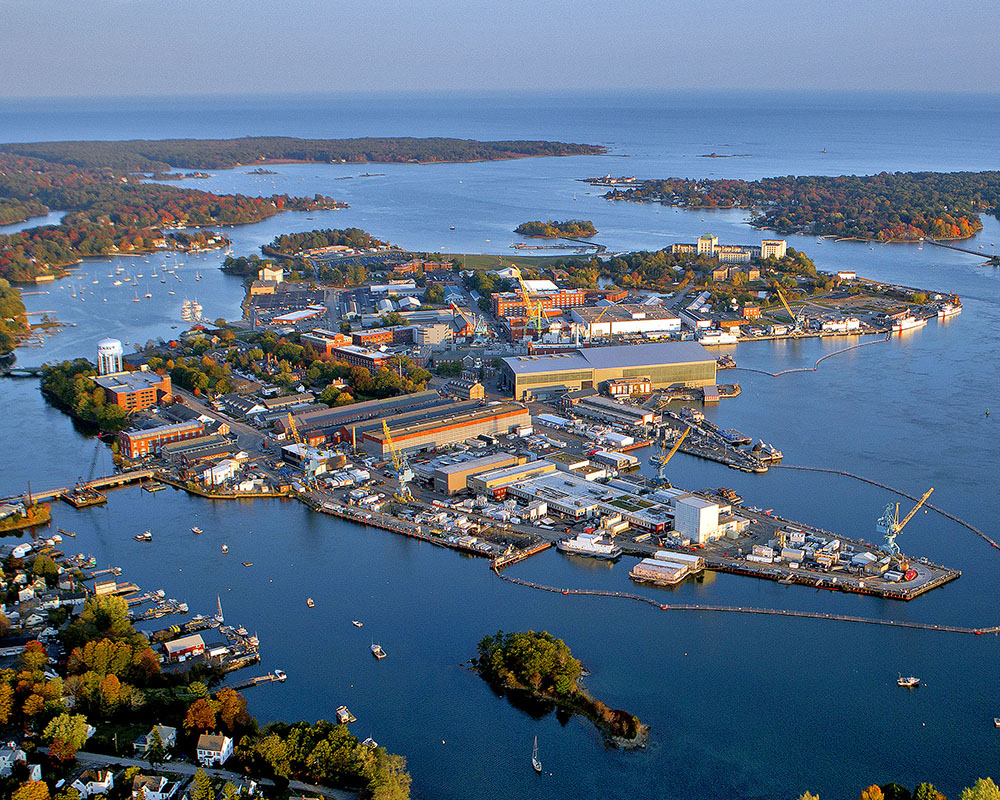
Aerial view of the Portsmouth Naval Shipyard. Courtesy of Portsmouth Naval Shipyard.
In the 1960s, the then-popular urban renewal movement brought the demolition of hundreds of homes and buildings and the displacement of the families and merchants who occupied them. The focus was on the city’s core and north end. In 1991, the Air Force base closed and the resulting job losses reduced the city’s population by 20% and triggered an economic downturn that lasted for years. But the city’s resilience prevailed.
The razing of buildings under urban renewal spawned new interest in protecting the historic Colonial, Georgian and Federal style buildings that had become a trademark of the city since the early 19th century. That new sensibility led to the preservation of the 32 historic buildings now included in Strawbery Banke, Portsmouth’s outdoor history museum, visited by more than 90,000 people annually. Likewise, the redevelopment of the Market Square area in the late 1970s conserved its distinctive architecture while adding improvements and amenities that made it the focal point of the downtown.

An aerial view of Strawbery Banke. Courtesy photo.
When Pease Air Force Base closed, about 1,100 acres were turned over to U.S. Fish and Wildlife Service as a preserve, a portion also houses the NH Air National Guard and about 3,000 acres were gradually transferred to the newly-formed Pease Development Authority (PDA), which transformed it into the Pease International Tradeport, that continues to draw companies and new workers to the area for higher-paying jobs, many in high tech. The property is also home to the Portsmouth International Airport at Pease, which offers commercial, charter and cargo flights and services.
Some 4.86 million square feet of commercial/industrial space has been developed at the Tradeport, which hosts more than 250 companies paying $700 million in annual wages to more than 10,500 workers, according to PDA Executive Director David Mullen. Roughly $6.6 million went to the city of Portsmouth for municipal services last year alone. “The diversity of commercial enterprises at the former base has allowed the city to be more resilient when faced with economic downturns,” says Nancy Carmer, economic development program manager for the city.

David Mullen, executive director of the Pease Development Authority. Courtesy photo.
Artists Shape a City
Meanwhile, other newcomers were arriving. Drawn by the beauty of the city’s location on the river and by its then-inexpensive rents, artists, actors and musicians started moving in, making for a heady mix of new cultural offerings. Some of the early venues they created—like The Press Room—still stand, while others—like Theatre by the Sea, now Seacoast Repertory Theatre—were reincarnated.
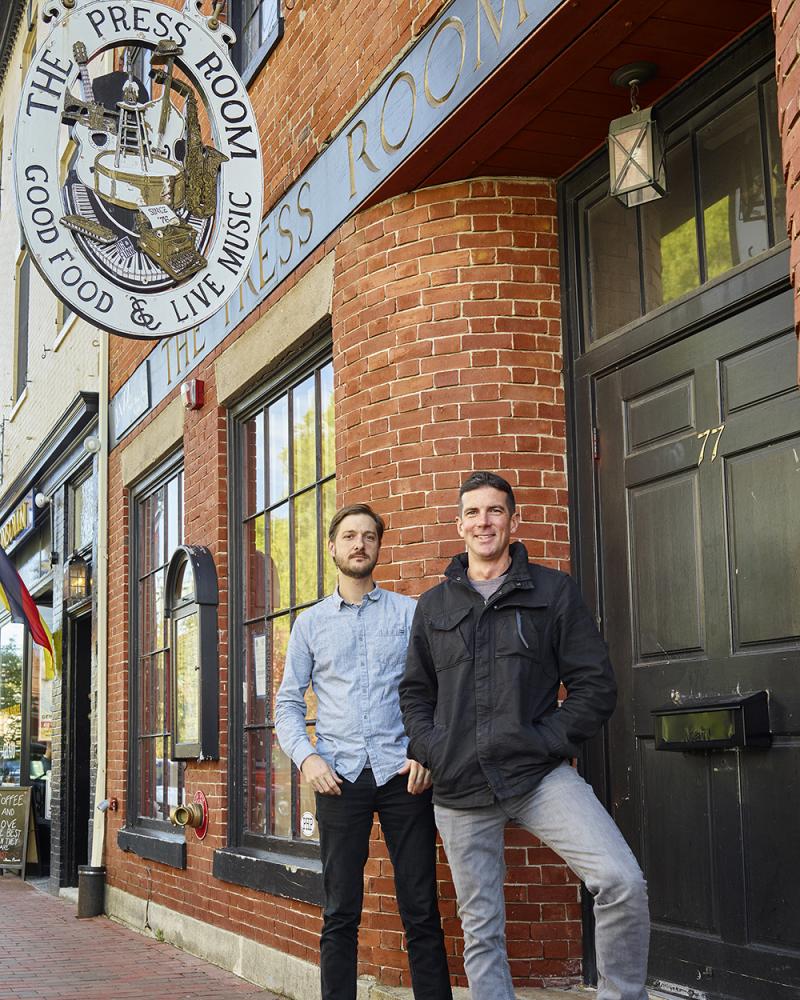
From left: Chris Greiner, general manager and Josh Sheets, owner of The Press Room. Courtesy photo.
That cultural vibrancy has continued to grow, and the city is home to a number of galleries and performance spaces as well as downtown specialty shops and restaurants. Prosperity studies done by Americans for the Arts found that the economic contributions of the city’s creative economy increased from $26 million in 2001 to $41 million in 2011. The 2016 impact is estimated at $58 million.
A Diverse and Evolving Economy
John Bohenko, who retired in December after 22 years as city manager, says the city has “the best of both worlds, from an economic standpoint.” On one hand is the thriving downtown that’s a tourist magnet and on the other is the Tradeport, with its 10,000-plus workers, and Portsmouth Naval Shipyard, which employs almost 4,000. “Between the Shipyard and the Tradeport, you’re probably looking at a payroll of $1.2 billion dollars,” he says. “Hospitality is very strong with 2,300 hotel rooms, 27,000 restaurant seats and over 140 restaurants. The Tradeport really compliments the downtown and vice versa.”
Bohenko says he has seen significant change in the city since he arrived in 1997, including an increase in total property value from $1.3 billion to $6 billion. Among the accomplishments he is most proud of are improvements to infrastructure, which was in disrepair upon his arrival owing to budget cuts following the closure of the air base. Under his watch, $50 million was spent on separating drainage and sewer pipes, and the construction of a new fire station, library, high school, middle school and parking garage.
Two phases of a three-part gateway improvement project have also been completed, bringing trees, medians and a new park to the formerly unwelcoming landscape that met motorists coming into the city off I-95 at Exit 7.
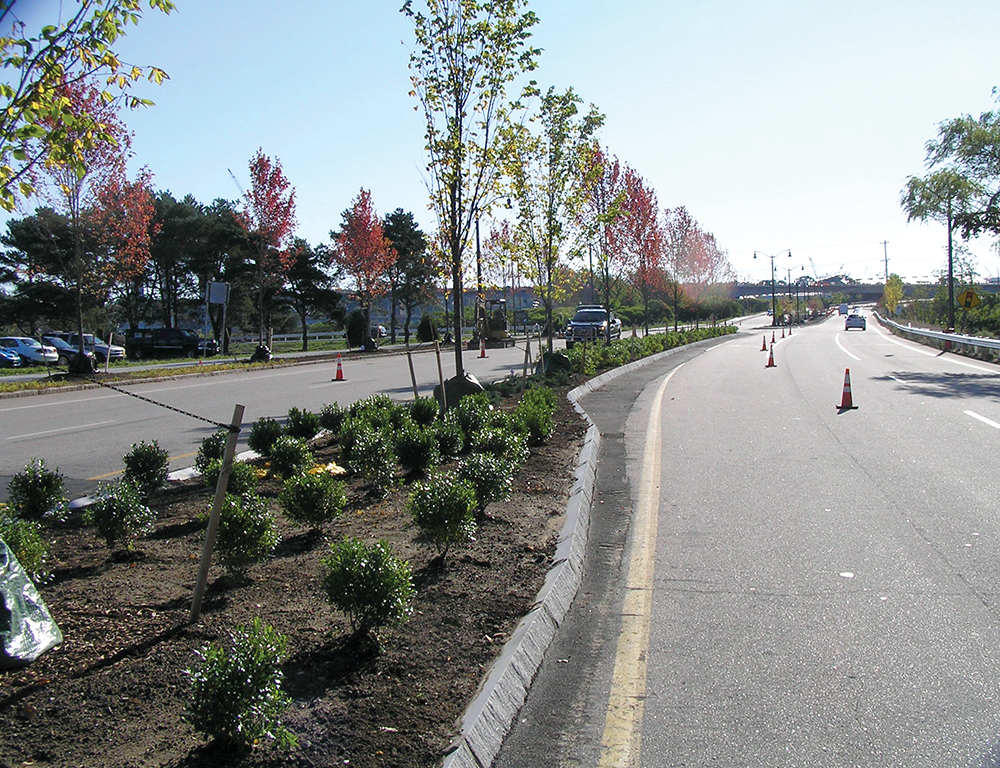
Trees and medians were added to the area off I-95 at Exit 7 as part of the city’s gateway improvement project. Courtesy of the Chamber Collaborative of Greater Portsmouth.
A variety of new commercial developments are either constructed or planned, many of them in the city’s North End, Carmer says. A 156-room AC Hotel has been built on Vaughan Street, featuring an event space, rooftop restaurant and bar.
Provident Bank consolidated its operations in a new 31,500-square-foot headquarters on Maplewood Avenue, with upper level residential. A developer is building a five-story mixed-use building at 46-64 Maplewood Avenue that will include 22 residential units and retail shops. A four-story, 21,117-square-foot office building has been approved at 111 Maplewood Avenue.
Other proposed projects include an 80-room Moxy Hotel at 165 Deer St., as part of a five-story mixed-use structure. While a large proposed North End development by Harborcorp, which included a Whole Foods, parking garage, conference center, hotel and condos, is not proceeding, Carmer says a new developer is considering options for the site.
Tuscan Kitchen completed renovating its new Tuscan Market in Market Square downtown. A new, three-story, 50,000-square-foot development project, called Brick Market, is underway on Pleasant Street.
Redevelopment of the former Frank Jones Conference Center on the Route 1 Bypass, calls for about 250 multi-family residential units, 23 townhouse condos, retail, office and restaurants.
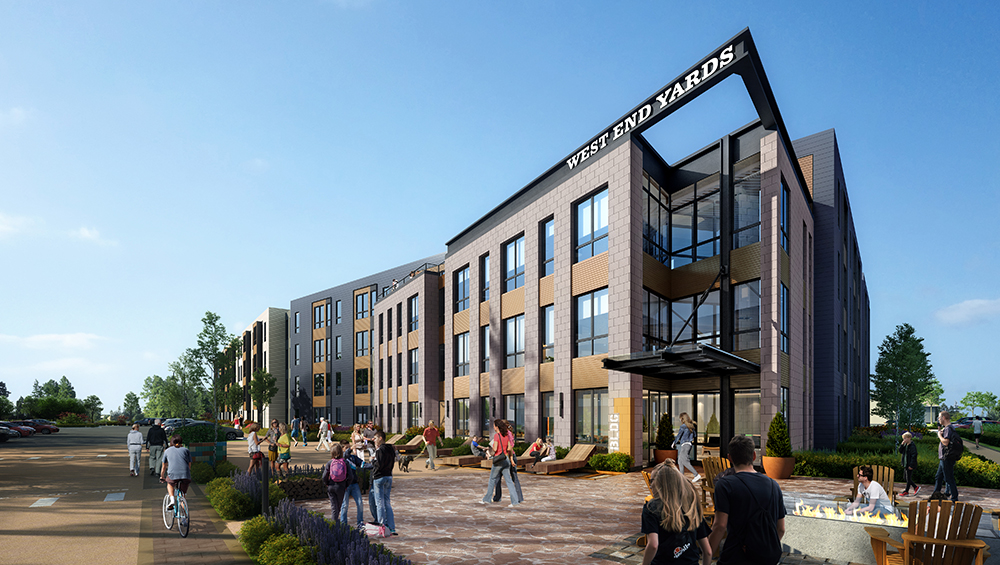
A rendering of redevelopment plans for the former Frank Jones Conference Center. Courtesy of Northern Gateway Regional Chamber of Commerce.
Over at Pease, key tenant Lonza Biologics is planning to grow its campus from 15 to 54 acres and add a million square feet to its facility, according to Mullen, which he says will increase the company’s workforce from 1,000 to 2,000.
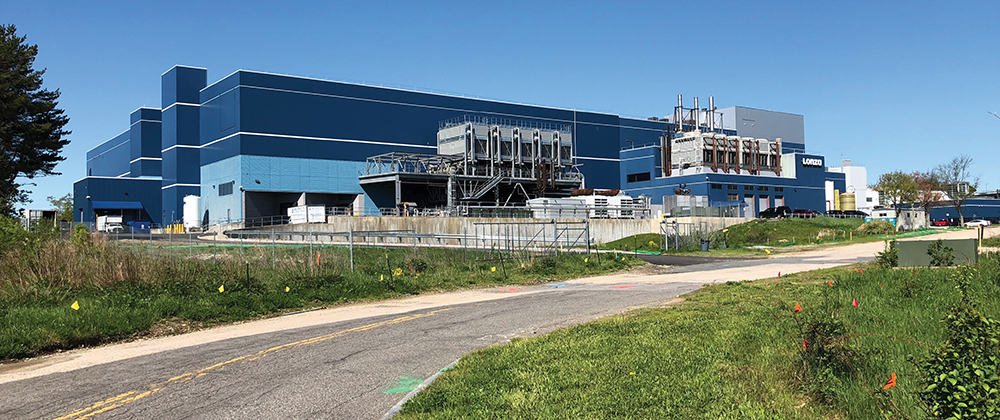 Lonza Biologics, located at Pease International Tradeport, is planning to expand. Courtesy of Pease Development Authority.
Lonza Biologics, located at Pease International Tradeport, is planning to expand. Courtesy of Pease Development Authority.
Mullen, who is retiring in June, says Pease is well situated to attract workers because it can draw on labor forces from Boston, Manchester and Portland, Maine. As much of the property at the Tradeport has been leased, he adds, “we’re shifting focus to development of the airport.” Paul Brean, airport director, says $24 million in runway reconstruction is under way “and that will support our needs and the needs of the Air National Guard.”
Growth in commercial service led to a $19 million terminal expansion to provide new concession space, an additional bridge and gate and is expected to be completed in 2021, Brean says. He notes the airport served 250,000 passengers this past year—about 10 times more passenger activity than the airport experienced in 2012. Twelve new Boeing KC-46 aircraft assigned to the NH Air National Guard 157th Squadron will potentially add 100 jobs, Brean says.
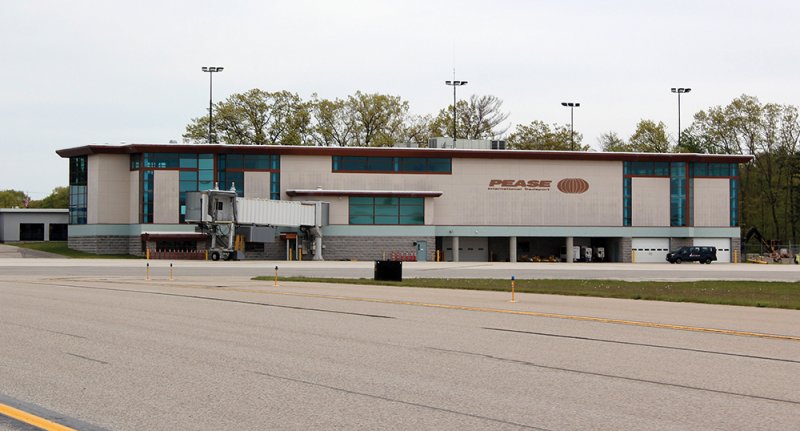
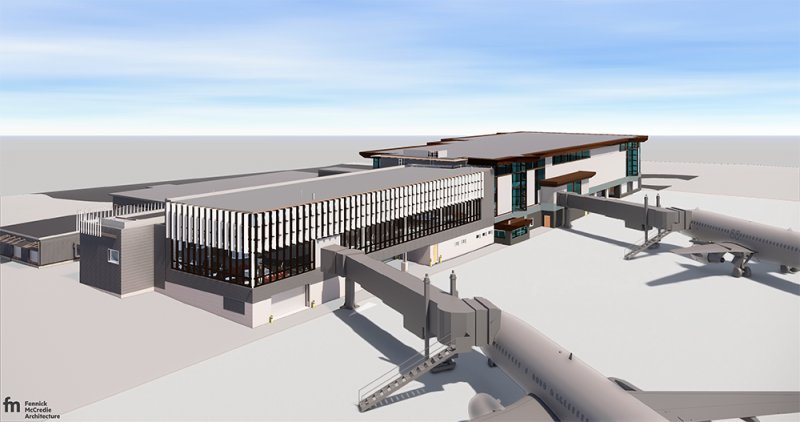
Above: The airport at Pease. Below: Plans for expanding the airport. Courtesy of Pease Development Authority.
Growing Pains
Still, Portsmouth faces challenges. Lack of inventory means demand and costs for housing, office and industrial properties is high. Carmer says a Colliers International marketing study reports the average asking lease rate for office space ranges from $20.24 to $25.90 per square foot. Because of reduced housing inventory, 2018 saw an 8.4% increase in the average cost of single family homes, from $435,000 to $468,000. Between 2015 and 2018, prices for all homes increased 32.2%.
 In June, the average gross rent for a two-bedroom living unit in the city was $1,720 per month, up 3% from the previous year. High rents also mean workforce pressure, as many potential employees cannot afford to live in the city. “If I have someone of the millennial generation, they can’t live here,” laments Janette Desmond, owner of Kilwins chocolate shop on Market Street (pictured, left). That includes her son John, the store manager. “He’s been looking. He wants to buy his first home, but he’s realizing his ability to buy anywhere around Portsmouth is 100% out of range and that’s a tough, tough thing.” Along with a shortage of staff, Desmond notes says she has one of the most expensive rents among Kilwins’ franchisees. “There’s a comparable store in Colorado—our sales are almost exactly the same—and I pay almost four times the rent she does,” she says.
In June, the average gross rent for a two-bedroom living unit in the city was $1,720 per month, up 3% from the previous year. High rents also mean workforce pressure, as many potential employees cannot afford to live in the city. “If I have someone of the millennial generation, they can’t live here,” laments Janette Desmond, owner of Kilwins chocolate shop on Market Street (pictured, left). That includes her son John, the store manager. “He’s been looking. He wants to buy his first home, but he’s realizing his ability to buy anywhere around Portsmouth is 100% out of range and that’s a tough, tough thing.” Along with a shortage of staff, Desmond notes says she has one of the most expensive rents among Kilwins’ franchisees. “There’s a comparable store in Colorado—our sales are almost exactly the same—and I pay almost four times the rent she does,” she says.
Rochon at the chamber says high rents are forcing some small retailers to relocate “to what some of them call Siberia, one of the parallel streets, State or Deer streets, but you don’t get the same foot traffic. It’s a tough decision to have to make.”
Carmer notes that some of the artists who helped revitalize the city had to move away because of the lack of affordable spaces. “We are concerned about factors of livability,” says Beth Falconer, executive director of 3S Artspace, a nonprofit with a gallery, performance space and restaurant on Vaughan Street.
“Nonprofit art spaces like 3S cannot afford to offer access at the prices we do without the support of our philanthropic community,” she says. “We simply cannot charge the true cost of an event or we would lose our access and affordability profile.”
Despite these challenges, Portsmouth is prospering. Carmer says Portsmouth’s success is good for the region. “Our resident workforce is 14,000 but our overall workforce is closer to 40,000 so it just tells you we’re sort of a regional engine. When Portsmouth prospers, the region prospers.”
